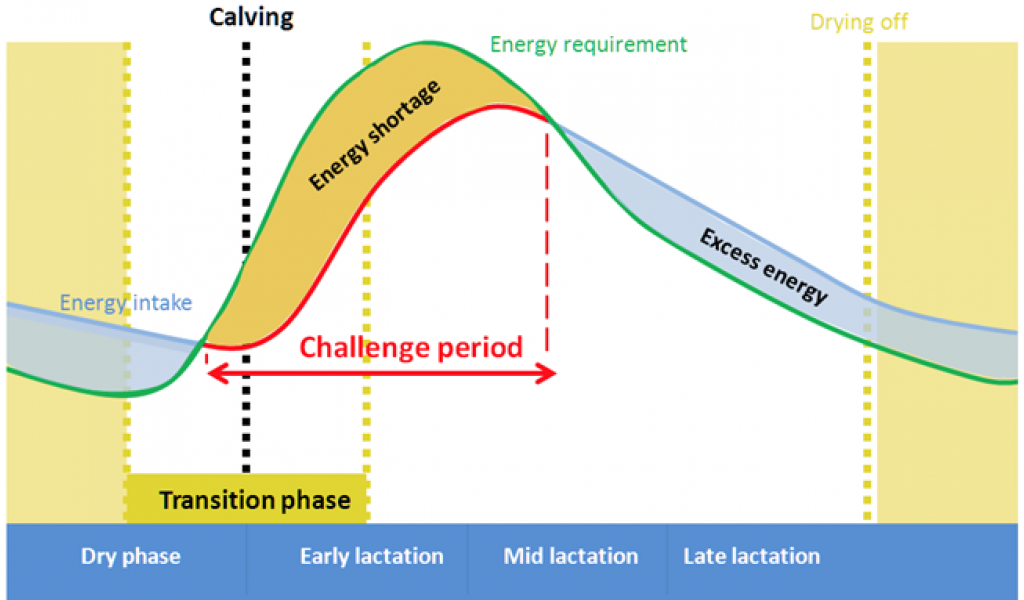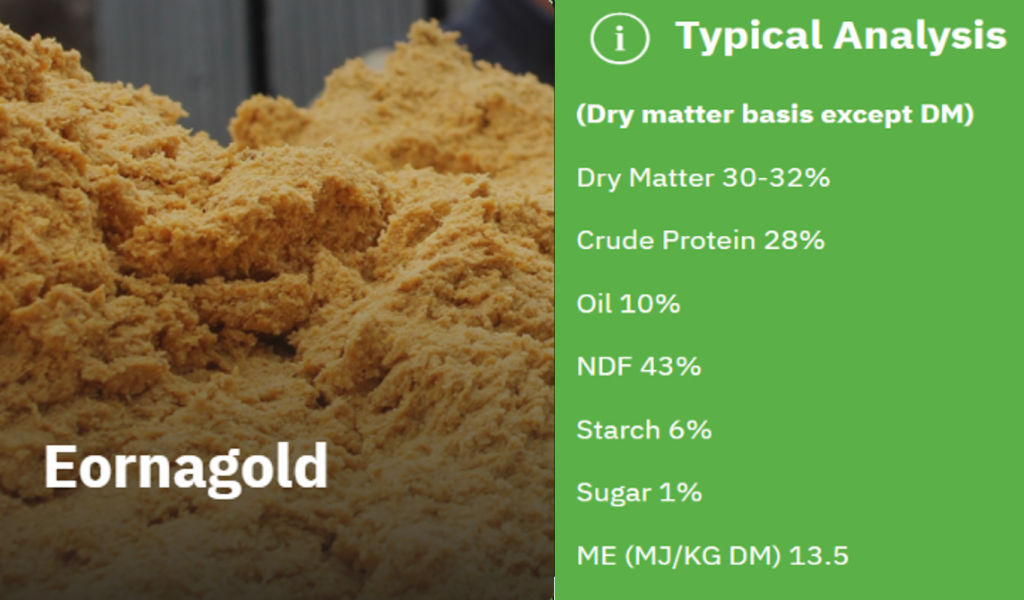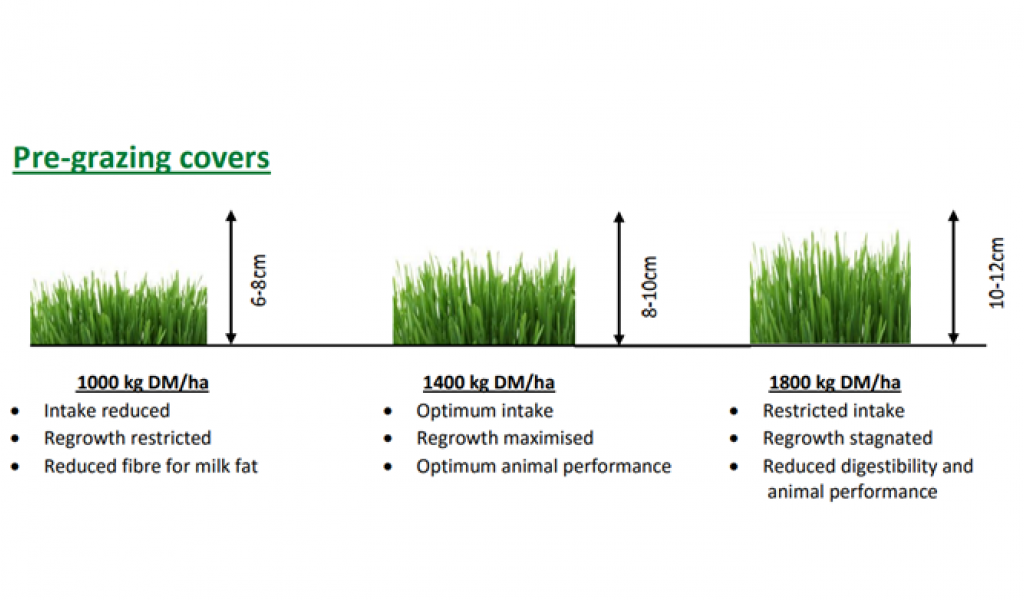Specialist Nutrition IE
Ballymountain, Waterford, X91 V6YR, Ireland
Specialist Nutrition IE
Ballymountain, Waterford, X91 V6YR, Ireland
Specialist Nutrition IE
Ballymountain, Waterford, X91 V6YR, Ireland

Transitioning onto grazed grass as the basal forage for the cow's diet represents quite a substantial dietary change for the cow's rumen and may take 2-3 weeks for rumen microbes to adapt fully. Significant changes in the diet can cause negative effects on milk & milk solids production in a short time. Therefore, turn out onto a fully grazed grass-based diet should be managed over a space of 2-3 weeks minimum.
As grass quality varies from first to second rotation, a dietary imbalance can occur if not managed carefully. Matching the buffer feed to the nutritional characteristics of the grass can have multiple benefits for the herd.
Buffer feeding allows the farmer to balance the cow's dietary requirements whilst managing grass availability on the farm. Targeted supplementation, particularly in early lactation, ensures the herd peaks correctly and maintains maximum fertility performance from nutrition.
Some negative energy balance (NEB) & BCS loss after calving is inevitable as maximum energy output through milk occurs before max DMI is reached.
Minimising this NEB will lead to higher milk solids, reduce BCS loss and enhance herd fertility.
Insufficient energy in the milking cow's diet can result in low milk protein, low milk yields, poor fertility and metabolic issues (e.g.ketosis), and a loss of body condition score (BCS). The ability to buffer feed can make up the shortfall in overall dry matter intake (DMI) targets, especially when dry matter is low in grass.
Remember, for every 1% reduction below 18% in grass dry matter, grass intake is reduced by 0.33 kg DM.
Using data, we must identify the intake deficit and make up the difference in buffer feed
The buffer feed should supplement the grass quality being offered to balance the diet for Fibre, DM, Protein and Energy to build a matching buffer feed to drive milk yield, butterfat and milk protein production.
1. Balance a cow's diet for minerals
2. Boost Butterfat
3. Reduce Acidosis risk
4. Manage a high stocking rate & grass supply
5. Improve fertility
6. Ensure milk production potential whilst managing BCS
For further info: https://specialistnutrition.ie/news/buffer-feeding-the-dairy-cow-know-what-you-dont-know
Maintaining good rumen function & pH is critical to ensuring feed is converted to milk efficiently. The cow requires adequate levels of energy, protein, fibre (structural /digestible), water & minerals —cow's need to achieve this daily to ensure herd longevity and profitability.
Feeding concentrates can help bridge the gap in terms of the energy/protein demand. However, if the diet is not balanced for effective fibre, the cow can be susceptible to subclinical acidosis and poor ruminations. If this persists, then additional problems can follow, namely butterfat depression, NEB & fertility issues.
Structural fibre is essential in ensuring a cow chews her cud. Second rotation grass has quite a low NDF, resulting in reduced ruminations if not supplemented with longer fibre (e.g. straw/silage) and digestible fibre sources (Sugar Beet Pulp / Soya Hulls).
The inclusion of rumen enhancing additives such as yeast or ACIDBUF can aid in rumen microbial growth, fibre digestion and manage acid loads to ensure a cow's rumen works at full efficiency during diet transitions.

Promoting DM intakes & achieving a balanced diet with silage, moist Feeds, minerals and more
It is vital to take stock of grass & grass silage quality and availability on the farm to balance the buffer feed with the grass presented. Grass DM needs to be assessed daily to gauge DM intakes & allocations. By knowing your forage analysis and cow's dietary requirements, a balanced buffer can be formulated. Buffer feeding should complement a cow's overall DM intakes whilst utilising grazed grass effectively.
Feeding a buffer diet before milking allows cows to bridge any gap in DM intake daily voluntarily. Therefore, the presentation of fresh, palatable feedstuffs, space and allocation should be considered.
Moist Feeds present an ideal component for a buffer diet. Palatable energy-dense feeds in early lactation promote voluntary intakes with buffer feeding.
Farmers should also consider the use of protected fats where energy is limited. They are not only energy-dense, but they also bypass the rumen, ensuring maximum energy delivery! Protected fats such as Goldenflake should be considered as part of a balanced diet.

Ensuring cow's BCS loss is not significant (<0.5kg/day) in early lactation, and NEB is corrected into the breeding season is crucial for good fertility. Diet density and consistency are the keys to avoiding any nutritional imbalances whilst intakes are limiting. Body condition score and cow production should be good indicators of how well your diet is working. Cows should be regularly monitored for BCS.
Avoid significant changes in the diet around breeding and subsequent weeks. Gradual changes/displacements of feedstuff's whilst satisfying the cow's dietary requirements should be prioritised.
The herd's mineral status should be monitored closely with supplementation based on a herbage analysis and total diet. Therefore, trace elements cannot be readily stored in the animal and should be supplemented daily for best results.

Maximising grass quality should be at the forefront in future rotations. As we approach elevated grass daily growth rates, it is important to ensure utilisation is maximised. Cows should be presented with a leafy sward around 1400-1600kg DM /ha for optimum DM intakes and utilisation.


Contact Specialist Nutrition for further information or technical advice on managing your cows diet, call 051 833071
